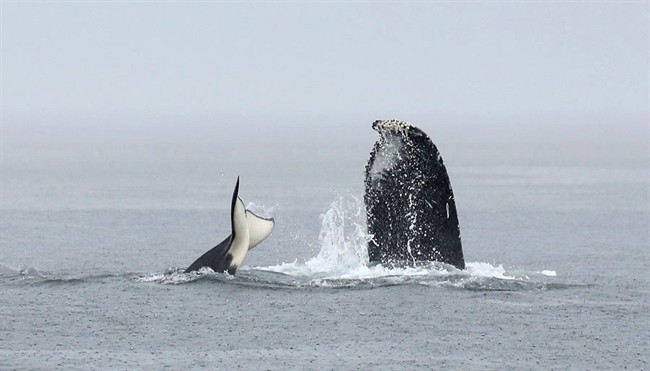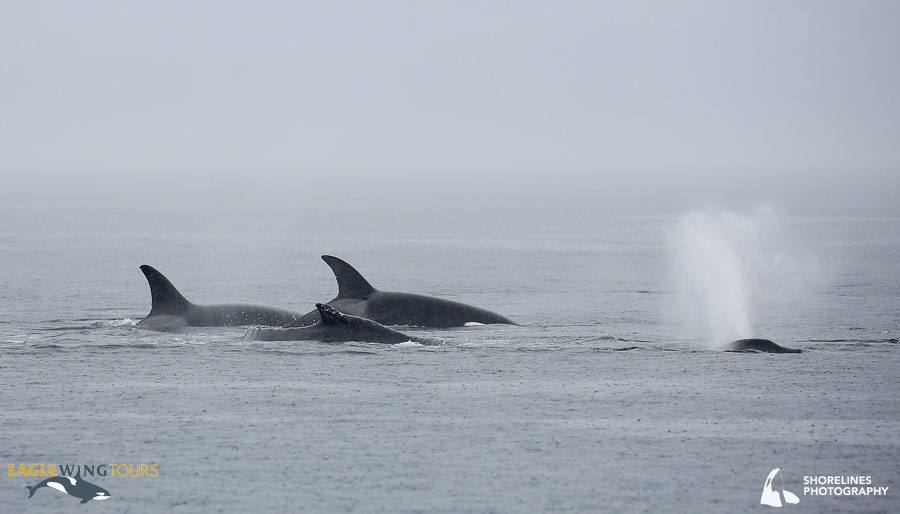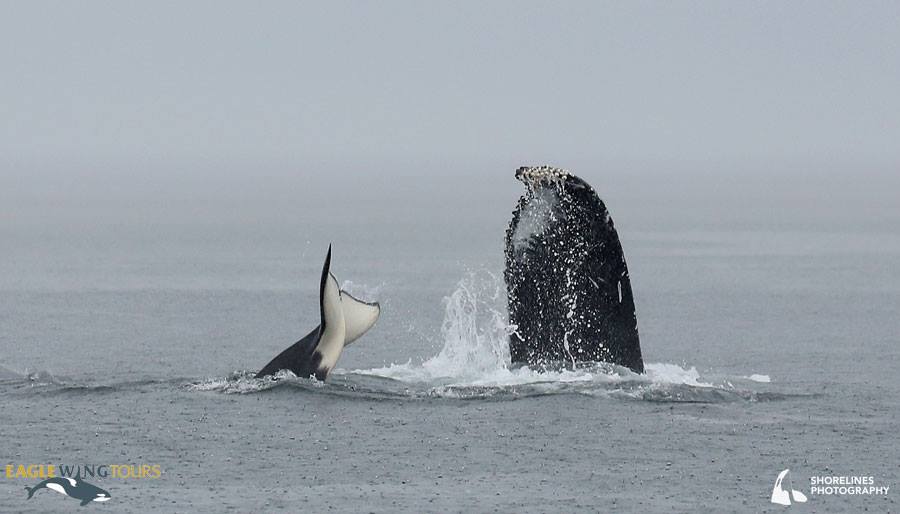VANCOUVER – A whale watching association says a battle between some of the largest creatures in the seas off the coast of British Columbia appeared to end with the human equivalent of fist waving and name calling, although they can’t be sure of the outcome.

Several whale watching boats at the western edge of the Salish Sea off Jordan River on Vancouver Island spotted a group of transient orcas surrounding two adult humpback whales and a calf on Sunday.
Mark Malleson. a whale watching captain and marine researcher, witnessed the fight.
He says in a news release issued by the Pacific Whale Watch Association that encounters between humpbacks and transient orcas, also known as Bigg’s killer whales, rarely result in a kill.
Transient orcas eat marine mammals but Malleson says it seems as if the species “just likes bugging” the much bigger humpbacks.
Vancouver Aquarium marine mammal research biologist Meghan Moore said this type of interaction isn’t something they’ve seen a lot of in the past due to the populations of both the transient orcas and humpbacks having increased.
“A humpback whale isn’t [a killer whale’s] first food source,” Moore said. “It would take a good fight for the killer whale to win that because the humpback is quite large in comparison.”
Moore suspects the killer whales were going after the humpback calf and that it was the older humpback’s natural instinct to protect the calf.

Get breaking National news
PHOTO GALLERY:
“It’s something we see, the fight or flight survival mechanism,” Moore said. Adding that humpback and grey whales are not known for being fast swimmers, making their protection mechanism to stay and fight. Moore says they roll, thrash and fight and if their tail were to strike, it would injure the killer whale.
In the end, if it’s a matter of survival or lunch, the orca will choose survival.
Naturalist Valerie Shore also saw the standoff from another boat and says most of the action happened below the surface but there was huffing, puffing and occasional swipes of their tails from the humpbacks as they blocked access to the calf.
She says the adult humpbacks finally chased off the orcas, but she and her crew suspect the calf may have suffered a torn tail, although they couldn’t get close enough to confirm it.
“We saw what we thought at the time was a large blood burst and seconds later a humpback, possibly the calf, rose and remained stationary at the surface. We all gasped, thinking it was a massive wound,” Shore says in the release from the association.
Malleson radioed later to say the burst was whale feces, which Shore speculates may have been a defence mechanism or the response of a very frightened young humpback.
“I’m not sure if the killer whales ever thought they were going to be able to take one of these humpbacks out,” says Malleson, “but it appears they certainly enjoyed getting them worked up.”
He called it a “great interaction.”
~ with files from Paula Baker

































Comments